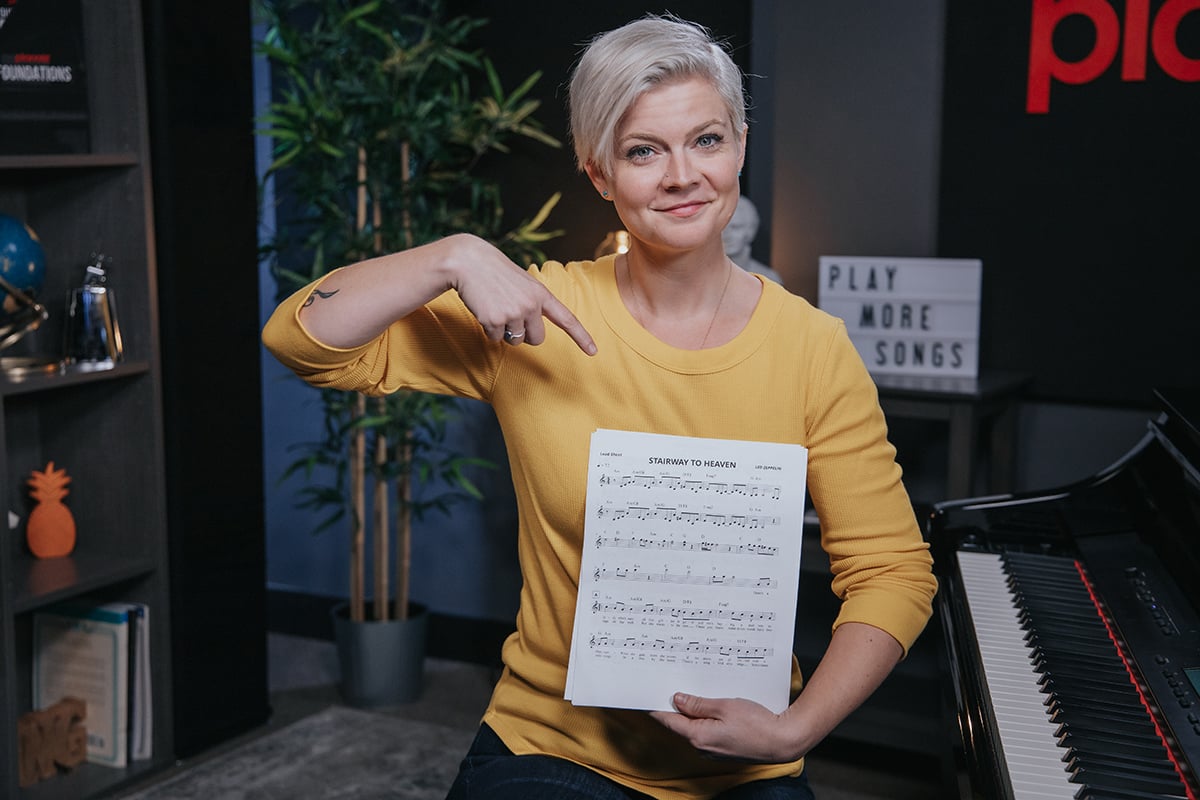Since its first recording in 1984, there have been over 100 recordings made of “Hallelujah,” the beautiful song written and made famous by Leonard Cohen.
A notorious perfectionist, he is said to have originally written 80 verses. My favorite explanation of this song’s meaning comes from Cohen himself:
He said many kinds of hallelujahs do exist, and all the perfect and broken hallelujahs have equal value.
<< Click HERE to download the lead sheet >>
In the video, we’ll show you how to play Hallelujah using a lead sheet.
A lead sheet contains treble clef notation, chord names, and lyrics, and you can download ours for free!
You’ll learn two different ways to approach the song. In one, you’ll play the notated melody and use the chord names to create your own left hand part, and the other is to forget about that notated melody altogether and create an accompaniment for the song using chords in both hands. This is a very useful skill for playing as an accompanist for yourself or another singer, or in a band setting.
Hallelujah!

Learning how to read music is like learning a new language. It can feel intimidating and frustrating, but it doesn’t have to be. With proper training, you can quickly and easily read music and unlock the songs you know and love. Take a look at Sight Reading Made Simple, our 100% FREE course on how to painlessly read notes.
Lisa Witt has been teaching piano for more than 20 years and in that time has helped hundreds of students learn to play the songs they love. Lisa received classical piano training through the Royal Conservatory of Music, but she has since embraced popular music and playing by ear in order to accompany herself and others. Learn more about Lisa.
/marketing/pianote/promos/april/banner-bg-m.webp)
We use cookies for traffic data and advertising. Cookie Policy »
/marketing/pianote/promos/april/banner-title.webp)